Without content marketing management, there’s a good chance your content strategy will either grind to a halt or, worse, fall to pieces.
It’s one thing to “do” content, and another thing entirely to do it well.
To do it well, you need to be organized and systematic—and this is where content marketing management comes into play. Think of it as the glue that holds every part of the content process together, from ideation and creation to distribution, promotion, and measurement.
What Is Content Marketing Management?
Content Marketing Management
Content marketing management is the way in which you manage content.
It’s the handling and organization of your content marketing efforts, from blogs and white papers to videos, social content, and newsletters. Once you’ve got your content strategy in place, you need to plan, execute, monitor, measure, track, and repeat, all of which is impossible without a slick management process.
Why Is Managing Content Marketing Important?
92% of marketing leaders say the volume of content they’re producing is higher than it was two years ago, and 50% said they currently have more content than they can effectively manage, which can often lead to organizational silos and mismatched messaging.
Here’s the issue: There are many spokes to the content marketing wheel.
There’s audience research, keyword research, buyer personas, content calendars, outlining content, creating content, distribution, repurposing, and tracking the performance of each piece. Juggling every task can be a massive struggle if not carefully planned.
Content marketing management helps wrangle all of these individual tasks and bring them together in a cohesive system that can be replicated repeatedly, saving content teams a ton of time and overwhelm. On top of this, it helps you streamline your efforts and improve collaboration for better results across your entire content strategy.
Content Marketing Management Responsibilities: What Does A Content Marketing Manager Do?
Content marketing managers wear a lot of hats. Their job is to oversee every part of the content marketing process—some days, they’ve got to wear their strategist hat, and on others, they’ll need to don their finance and budgeting hat.
Here’s a (by no means exhaustive) list of a content marketing manager’s key responsibilities.
Strategize & Plan
- Create a comprehensive content marketing vision: Design and bring the entire content marketing ecosystem to life from start to finish.
- Choose goals, objectives, and key results: Identify company content goals, outline the key objectives, and measure the results against those KPIs.
- Manage people, tools, budget, and other resources: Have a top-level view of who’s doing what, the tools being used, and how the budget is being allocated.
- Content ideation, prioritization, and roadmapping: Come up with content ideas and map out a strategy that makes sense.
- Specific content plans: Design and implement individual content plans for various platforms.
- Manage project constraints, production timelines, and content handoffs: Manage content project limitations and deadlines.
Communicate & Coordinate
- Communication of business cases for high-level stakeholders: Understand key use cases and be able to explain them to upper management and other important stakeholders.
- Manage content assignments and expectations for contributors: Oversee content assignments to internal and external contributors and ensure everything stays on track.
- Hold in-progress check-ins with contributors: Regularly touch base with contributors, understand any problems, and solve any issues quickly.
- Share results reports for all stakeholders: Generate regular content reports and present them to key stakeholders.
Learn & Iterate
- Knowledge sharing: Manage training and development for the content team, document processes, and critical information so everyone stays current.
- Carry out testing and measurement: Track and test the performance of content campaigns and implement improvements based on the findings.
- Improve processes, frameworks, and standards: Identify areas of improvement in every process and put steps in place to make them better moving forward.
5 Common Content Marketing Management Challenges
1. Juggling Multiple Tools At Once
The sheer number of tasks a content marketing manager is responsible for means they need a ton of tools in place just to keep everything ticking over.
But here’s the thing: Most use a separate tool for each activity.
For example, you might use a project management tool for organizing teams, a keyword research tool for SEO, and analytics software for tracking content performance—and that’s before the neverending social media platforms that require their own unique set of tools.
Sometimes, you might be wrestling with eight or more tools at any given time. Just think how much time is wasted switching between them and the potential for lost data and information.
2. Balancing Each Part Of the Management Process
It can be tempting for content managers to focus on the bit of the job they enjoy the most.
They might dedicate 70% of their time to ideation or distribution and end up neglecting other important tasks.
For content management to work successfully, each activity needs a decent amount of time commitment. Without proper balance, managers might struggle to produce enough content or not get the desired results.
3. Aligning Vision With Stakeholder Expectations & Budget
Content managers have often worked their way up from the trenches of content creation, which is inherently, a creative process. As such, they might have lofty visions for their content strategy and find themselves stymied by stakeholder expectations and budget.
4. Managing Scattered Content & Team Members
Content management often requires multiple departments’ input and hard work– from social media and advertising to PPC and the design team.
Managing these departments and the content from each can be a headache if it’s not done strategically. It can end up creating content silos within different departments and, in some cases, seeing thoughtfully created content disappear into the ether.
5. Maintaining Consistent Processes
Content management is ultimately a team effort, but with so many different voices fighting to be heard, it can be a struggle to maintain consistency across departments and workflows. All it takes is one department to change how they do things to upset the entire content management process.
Content Marketing Management Tools, Software, Platforms, & Technology
The tools a content marketing manager might use will depend on their team size and goals. Here are a few must-haves to get started.
Project Management Tools
Content management involves all the key parts of project planning, like assigning tasks, overseeing deadlines, and mapping out timelines. Use a project management tool like CoSchedule’s Work Organizer to see who’s working on what at any given time.

Keyword Research Tools
Ensure your content is ranking well in the SERPs with the help of a keyword research tool. Find the best keywords for your content and check out the search volume and competitiveness with tools like Ahrefs and SEMRush.
Analytics Tools
Monitor and track the results of your content with an analytics tool like Google Analytics or Google Search Console.
Collaboration And Communication Tools
Keep stakeholders and teams in the loop via dedicated collaboration and communication tools. Using a tool like Slack will help keep all comms in one place for easy access.
Content Calendar Tools
Creating a content calendar will give you an all-in-one view of your planned pieces. CoSchedule’s Marketing Calendar brings everything together in one place for easy viewing and collaboration.
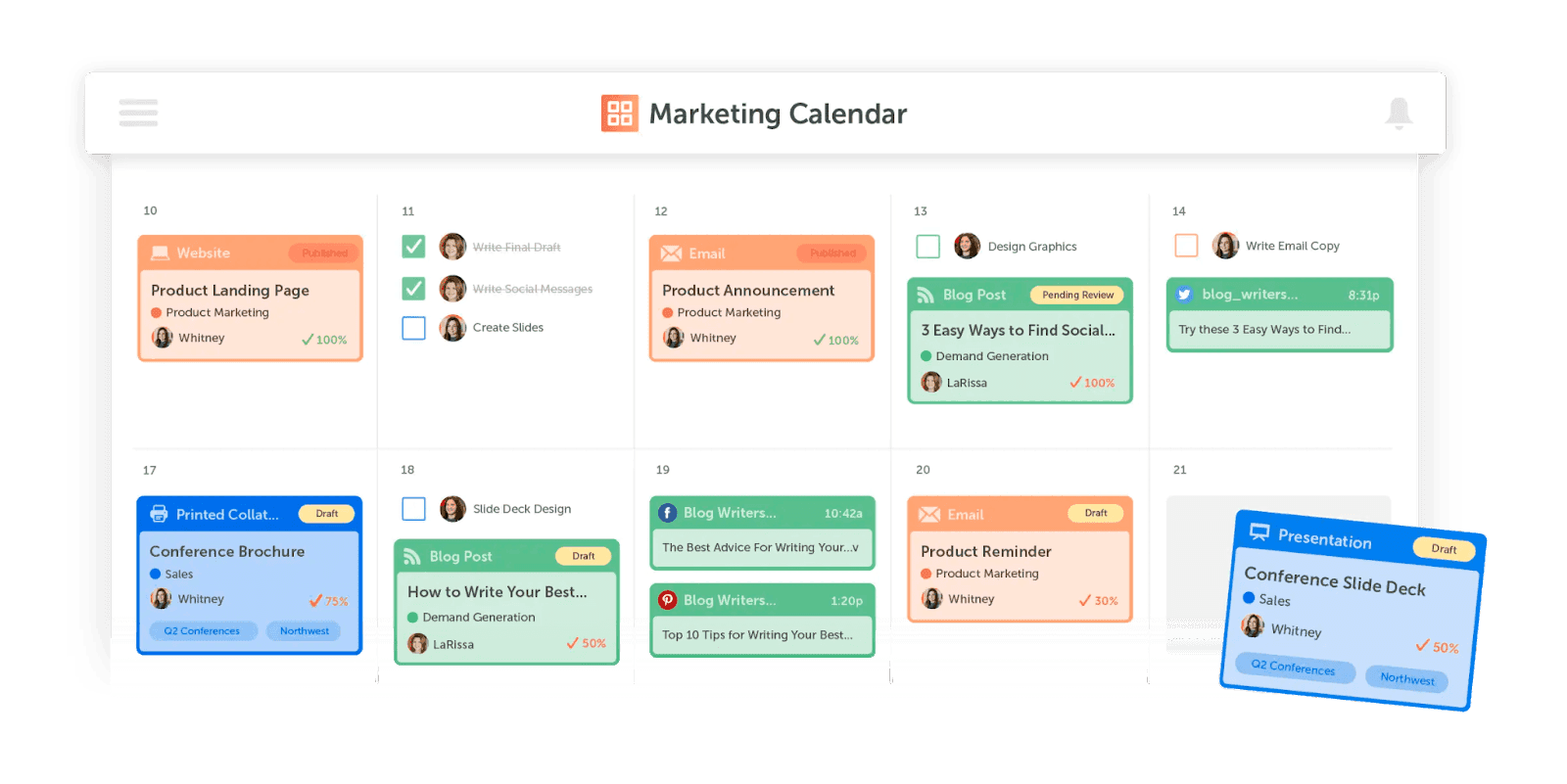
Content Research Tools
Using a research tool will help you tackle current marketing trends, see what competitors are doing, and ensure you’re working with top talent. Tools like BuzzSumo and Feedly are great starting points for seeing what content is already out there.
Steps In The Content Marketing Management Process
Step 1: Strategize
Plan out your content strategy from start to finish. Research your audience, plot your key content formats, and start thinking about how you’ll work through the plan.
Use our content strategy template for inspiration.
Step 2: Triage
Avoid neverending marketing requests by triaging them and bringing them together in one place. Instead of fielding submissions in your inbox, DMs, and your chosen comms platform, automatically add them to your calendar for a top-level overview.

Use our marketing request forms template to get started.
Step 3: Ideate
Host a content ideation workshop where all teams come together to brainstorm potential topics and content formats. This is your chance to think big and create your vision for moving forward. Here are some creative marketing ideas to get your creative juices flowing.
Step 4: Prioritize
Choose what to focus on first. Consider your content goals and KPIs to determine which pieces you’ll focus on first. Use our project prioritization matrix template to help your figure it out.
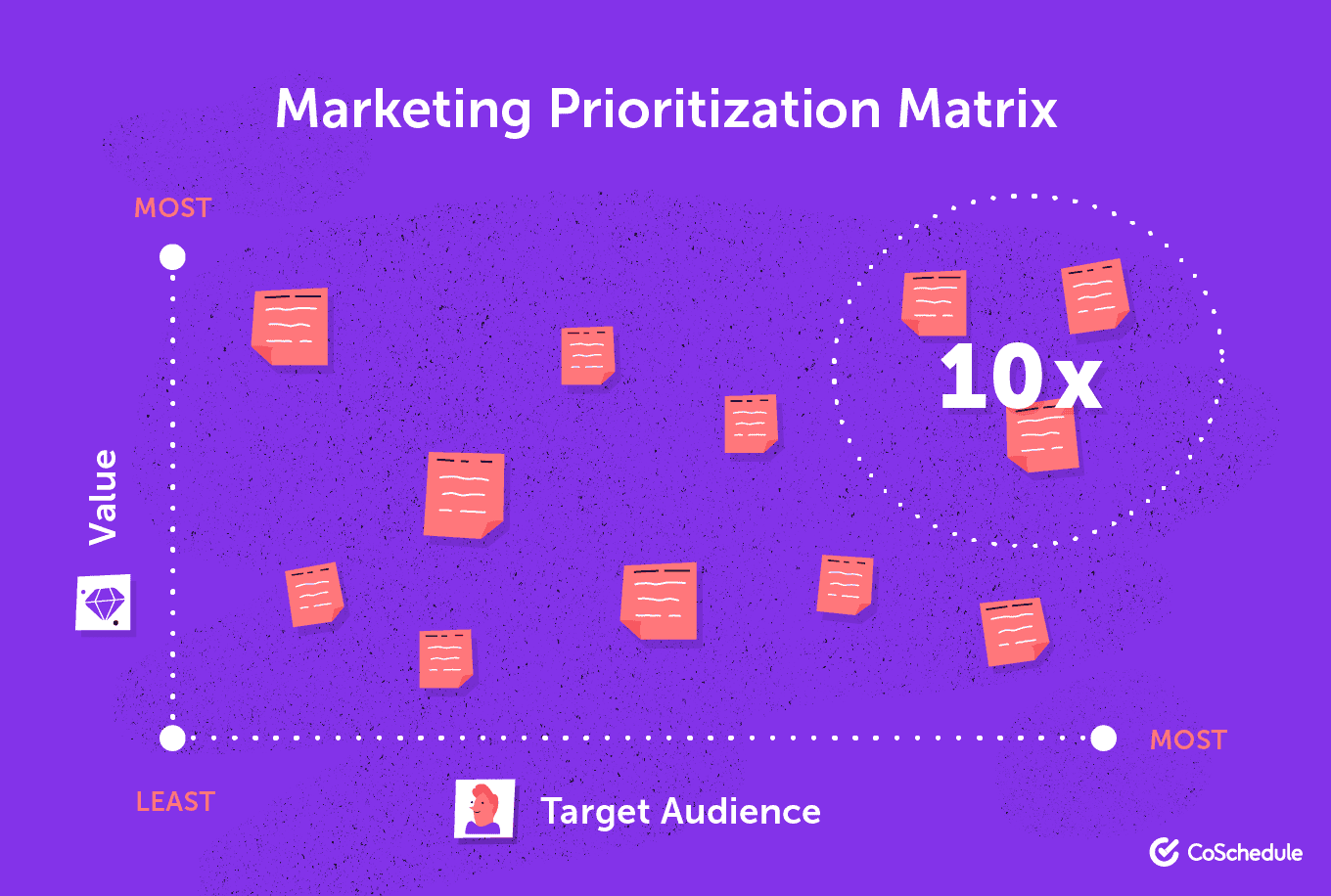
Step 5: Plan
Plan what content you’ll create and when. Create a roadmap of upcoming content for each platform and assign deadlines for each piece. Use our content planning and creative brief templates to start creating briefs for each piece.
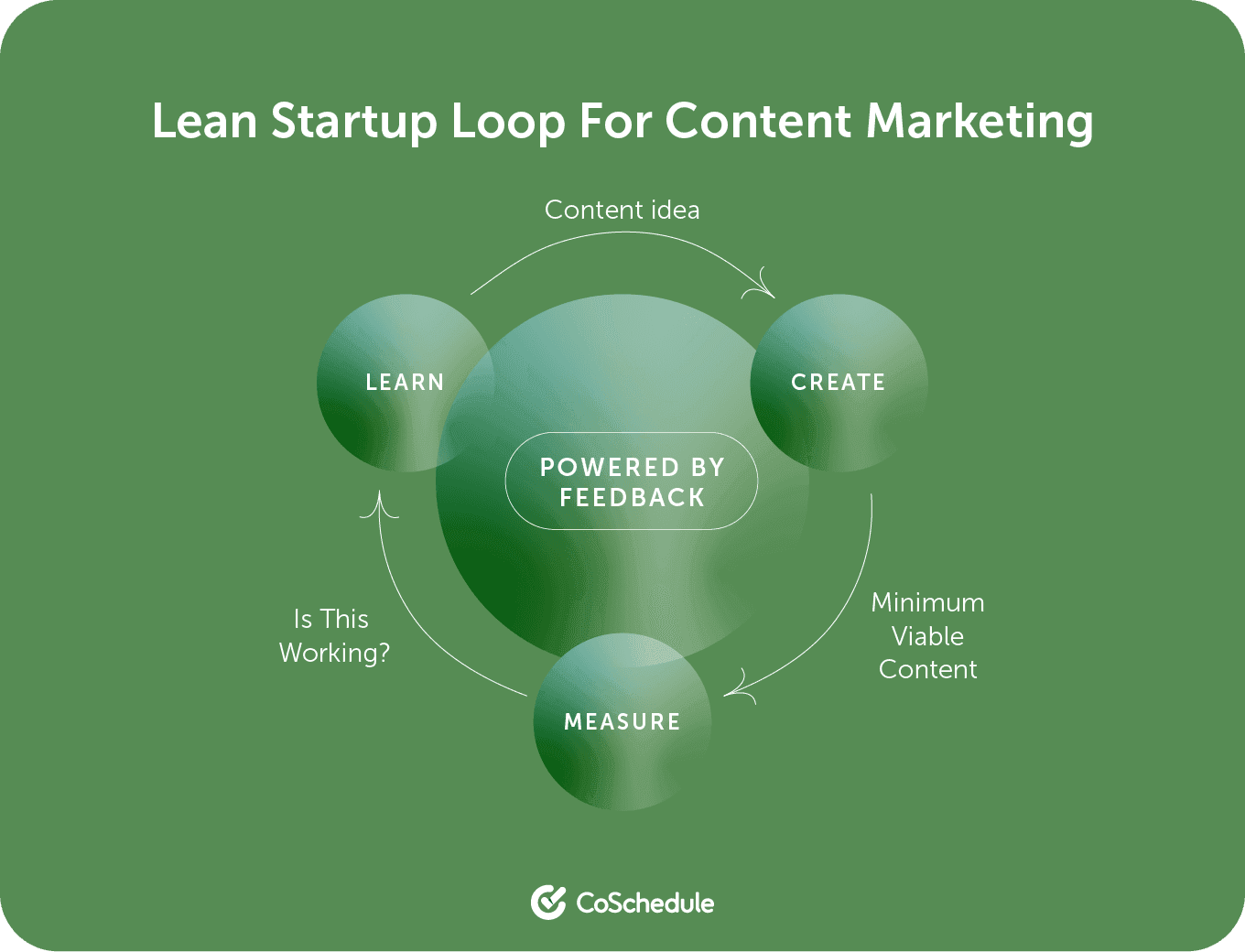
Step 6: Communicate
Inform leadership and stakeholders about your plans. Get their opinions and approvals where necessary and speak to contributors’ managers to understand their schedules and potential timings—the last thing you want is to assign a piece to a team that doesn’t have the bandwidth.
Step 7: Delegate
Start assigning content pieces to team members and bring onboard external contributors if necessary. Send out briefs, set deadlines, and field potential questions.
Step 8: Contribute
Time to create! Oversee the writing, editing, and designing process and contribute when needed.
Step 9: Optimize
Optimize content for search engines. Implement keywords, write out meta information, and check the on-page SEO meets your guidelines. Use our on-page SEO checklist for inspiration.
Step 10: Coordinate
Coordinate and manage mid-project meetings, ensure due dates are met, and deliver efficient handoffs between departments. At this point, you might need to manage content review approvals and coordinate collaborations between the marketing and design teams.
Step 11: Publish
Time to put your content out there. Upload it into your CMS, schedule it on your social platforms, and follow your publishing calendar to ensure you don’t miss anything.
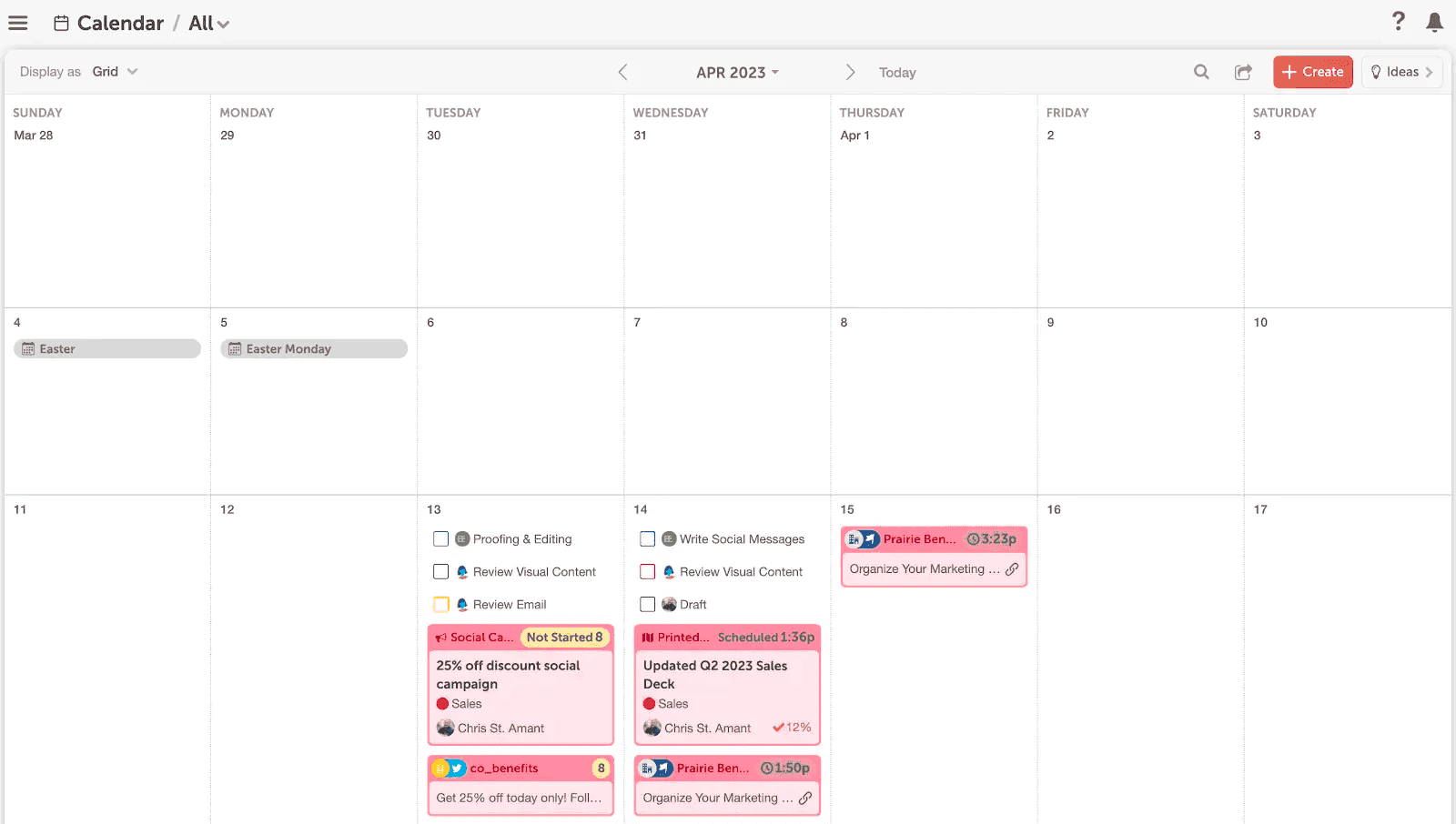
Step 12: Promote
If no one’s there to see a tree fall in the woods, did it even happen? Create a promotion checklist and follow the steps to make sure your content isn’t just sitting on your site gathering dust.
Step 13: Measure
Track the results of your content—is it hitting your marketing KPIs? Are you on track to reach your goals? Dig into your analytics to see the performance of each piece, and keep a close eye on your metrics.
Step 14: Learn
Share the results of your content marketing with your team and key stakeholders. Create a feedback loop to learn from past results and use the findings to fuel future campaigns and content efforts.
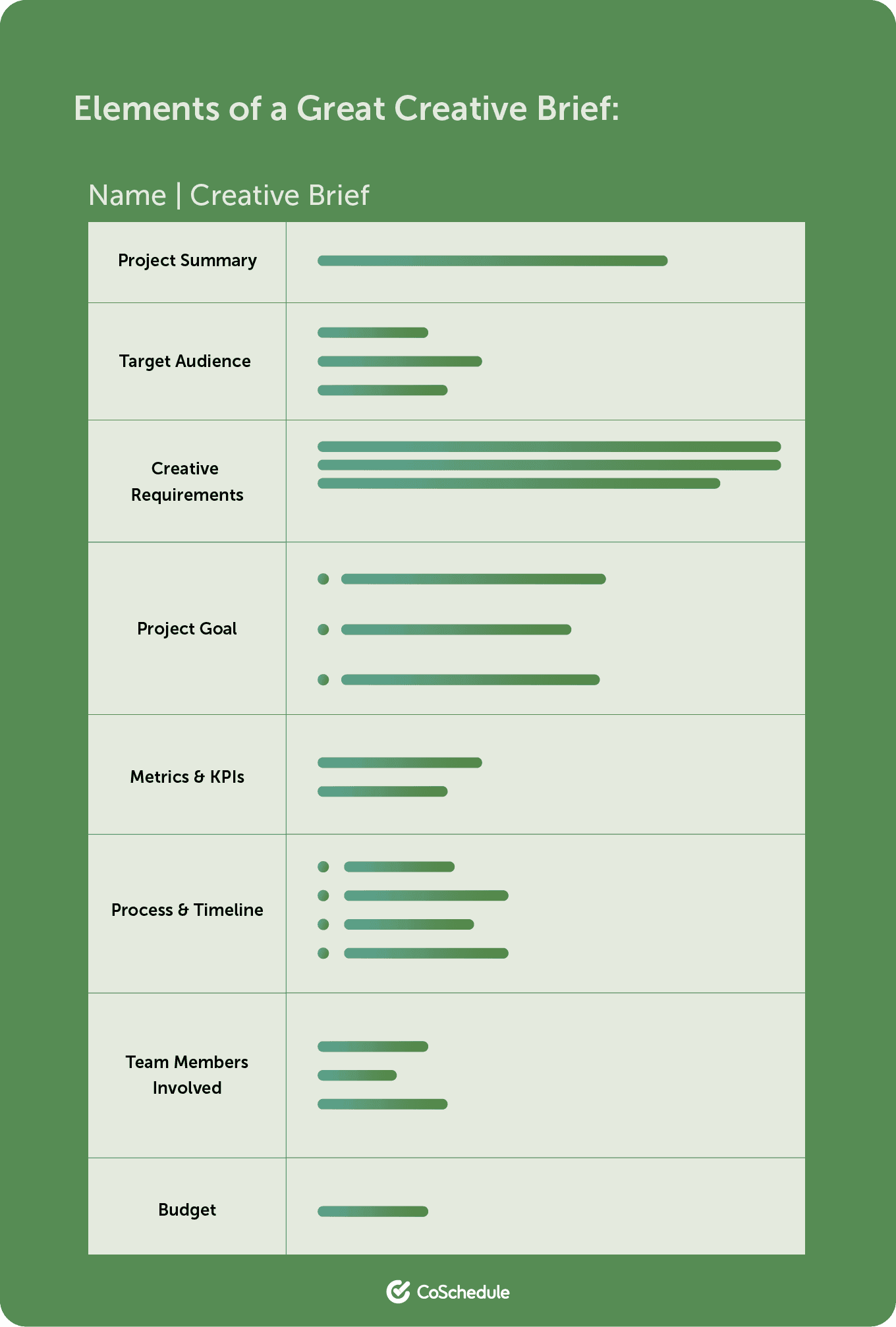
Step 15: Document
Note the processes, frameworks, and performance standards you need from every team member. Make it accessible to everyone who might need it and continue to add to it over time—ultimately, you’ll end up with a detailed content framework that acts as a central source of truth.
Step 16: Report
Create a report highlighting your process and the results of each campaign or piece of content (depending on the project scope). Share this with key stakeholders and the collaborators who were involved. Use our marketing report template to get started.
Step 17: Govern
Content governance helps you create a long-term approach to your content strategy. It turns your daily processes, tasks, and activities into a handbook that defines guidelines, roles, and responsibilities. Use our content governance template to create your own.
Step 18: Audit
Take a close look at your content marketing management process and dissect its overall performance. Dig into individual metrics, channels, and content to determine what’s working and what’s not. Use our content audit template to get started.
Step 19: Test
Create hypotheses to test and use these to run minimum viable projects to improve your content and content marketing process. Do this for each workflow, including ideation, publishing, distribution, and tracking.
Step 20: Update/Refresh
Content marketing isn’t just pumping out new content but creating a high-performing ecosystem of different content types. You should look into refreshing existing content to align with your current content guidelines. Use our content refreshing template to get started.
